huh
8 Things You Didn’t Know Your Tongue Could Do (You Can Try Them at Home)
Our tongue is an organ that we constantly use, but that we don’t pay much attention to. We use it for the most basic functions of human life, like eating and speaking, but there’s much more to it than we think. Your tongue actually has a lot of tricks under its sleeve (so to speak): for example, not many people know that it’s one of the most resilient and flexible organs in the human body.
We were surprised at how such a common organ, that we use every day, has so many surprises! So Bright Side wanted to share with you some curious facts about our tongue that you might not know and that caught our attention.
1. Your tongue never gets tired, unlike your other muscles.
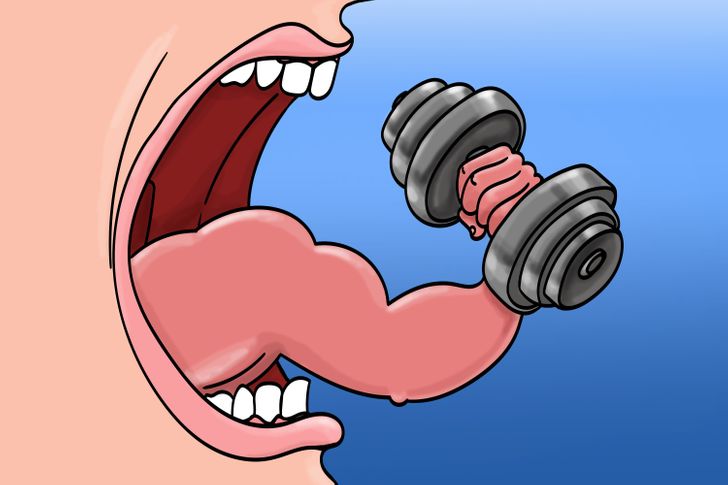
Have you noticed that despite the fact that your tongue is a muscle, it never gets tired or sore? That is, of course, if you don’t suffer from any type of medical condition. Then, unlike the muscles of your legs or arms, which would hurt if you did a lot of physical activity, your tongue can handle constant movement because it’s actually made of 8 muscles. It is also extremely flexible because of that. Could that be why some of us never get tired of eating?
2. Every tongue is different.
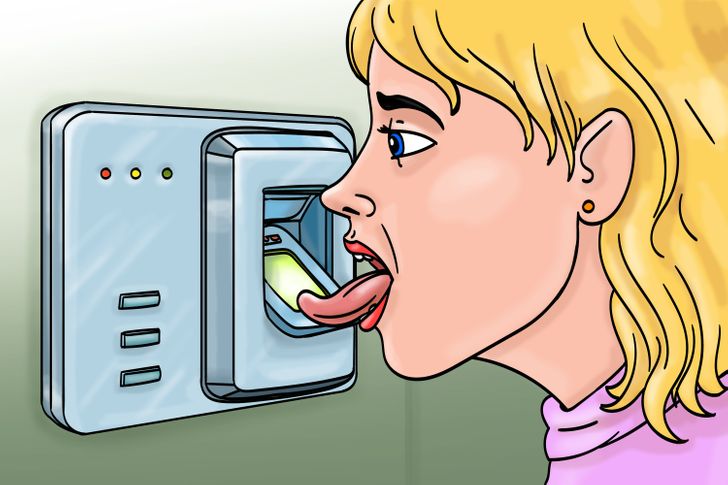
Every single tongue is different and unique. Kind of like your fingers, your tongue has its own unique print, so it could be used as a method of identification. It might not be too pleasant, though. Can you imagine having to scan your tongue at the airport, instead of using your thumb?
3. Can you roll your tongue?
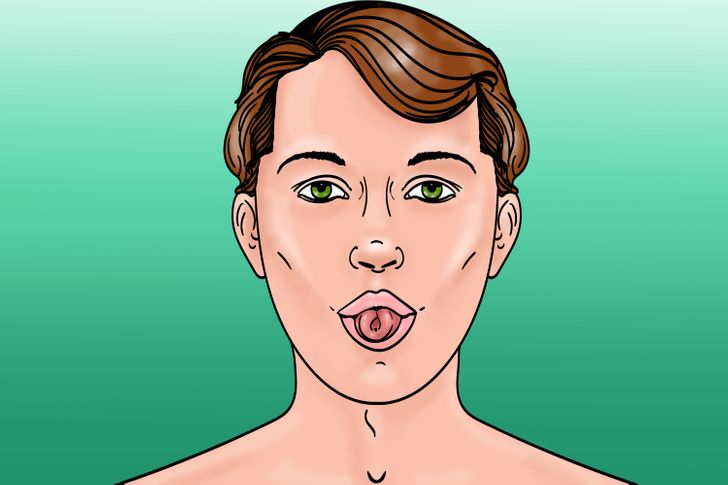
Scientists are still trying to find a logical explanation for the fact that a large percentage of human beings can roll their tongue to make a “u” shape, while a smaller percentage cannot. The main argument behind this suggests that it all comes down to genetics, but studies have been conducted where parents could not do it, and their children could. Other studies say that the language you speak might play a role too. We can’t tell for sure yet what having this great gift depends on, but you can give it a try and see if your friends can do it too.
There’s something else — a small percentage of people can also do the “clover leaf tongue.” It’s one of the rarest options of shapes that your tongue can make!
4. Tongues don’t get tired, but they can get fat.
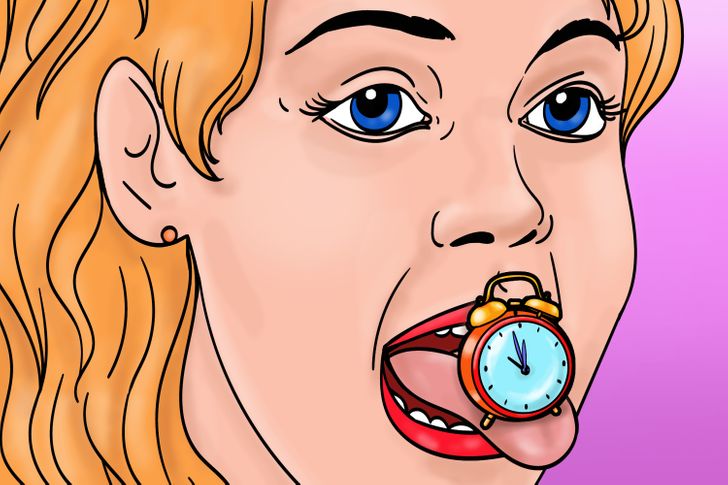
Like we said in the first point, the human body suffers from constant exhaustion — and the exception to this rule is the tongue. Of course, that might lead some people to think that the tongue is constantly exercising and in shape, but in fact, just like any other muscle, your tongue can get fat if you gain weight. Actually, snoring and sleep issues can be related to having a fat tongue!
5. Your tongue doesn’t really sense different tastes in different areas.
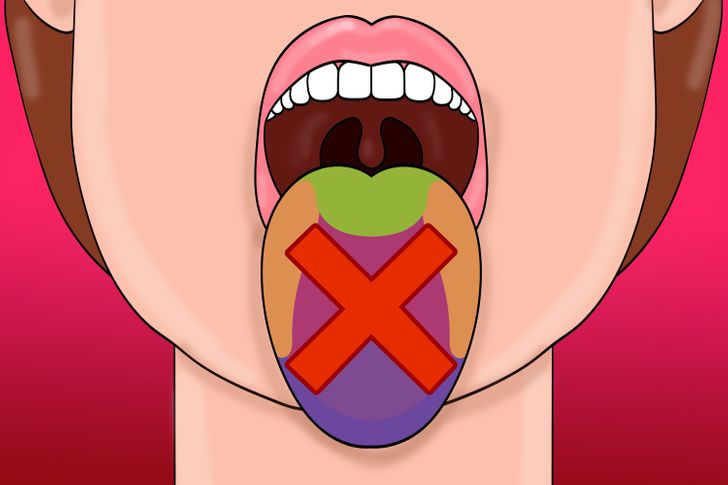
Due to a poor translation of a thesis, the most popular “taste map” of the tongue was actually misunderstood. What we know as the areas where the tongue perceives tastes, like sweetness at the tip and bitterness in the back, is just not a thing.
German scientist David Hänig presented his doctoral thesis in 1901, in which he suggested that the tongue had more sensitive surface areas than others, but his work was misinterpreted by a graph he used to show those areas.
In 1974, scientist Virginia Collings confirmed that tastes can be detected by any part of the tongue. What varies from area to area is the intensity with which they are perceived. By the way, taste buds are actually nature’s way of saving our lives, because they allow us to identify bad or poisonous food before eating it.
6. It’s impossible to capture the flavor of something by just using your tongue.
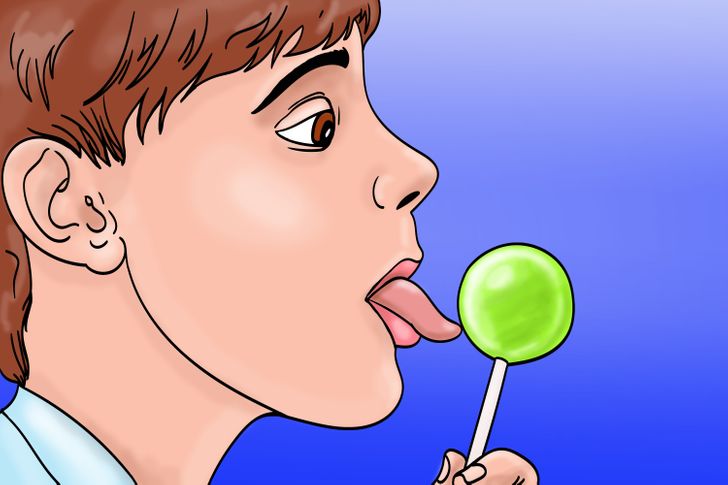
Tongue identifies tastes, not flavors. Aren’t those the same thing? Of course not. Try eating candy by covering your nose. Your tongue will identify that it’s sweet, but you won’t be able to tell if it tastes like chocolate or strawberry, since distinguishing flavors is part of the sense of smell, not taste. If you don’t have a piece of candy nearby to try, think about the ugly feeling you get when you get the flu and your nose is congested. Then, when your sense of smell is blocked, it seems like the food you eat has no taste at all.
7. It’s the part of the body that heals the fastest.

How many times have you bitten your tongue? Probably a lot, but after a few minutes you usually forget that it even happened. That’s because, thanks to saliva and the tissues that make up the tongue, this is the part of the human body that heals the fastest. We don’t recommend testing out this point at home, though!
8. The color of your tongue can tell you something about your health.

If your tongue is a light pink color, then congratulations! It means you’re probably healthy. Otherwise, it might mean you need to go to a doctor to get checked. Colors might vary between different shades, and each one indicates something different. If it is very red, you could have anything ranging from a minor infection to heart problems. Yellow indicates stomach or liver problems, and white can indicate dehydration. You can check out this article from Bright Side to find out what the color of your tongue can reveal about your current health.
Which tricks did you try doing while reading the article? Can you roll your tongue? What about doing the clover leaf shape? Let us know in the comment section!
Comments
noooooooooooooo
Interesting !
i can roll my tongue
Me too
me too
same
I can do clover tongue
Related Reads
I Refuse to Be a Pawn in My Dying Sister’s Cruel Plans

I Refused to Help My Son Financially, His Reaction Horrified Me

I Refuse to Support My Aging Parents—Because I Don’t Owe Them Anything

I Refused to Care for My Mom—I Got No Inheritance Anyway

I Was About to Marry Him—Until I Opened His Laptop

I Refuse to Pay for My Dying Stepson’s Treatments, Marriage Doesn’t Erase Boundaries

I Made My Stepdaughter Pay Rent After My Husband’s Death, My House Has New Rules Now

13 Strangers Who Stepped in Like Guardian Angels When It Mattered Most

I Refuse to Babysit My Sister’s Kids After She Publicly Aired My Dirty Laundry

11 Stories With Twists Stronger Than a Hollywood Film

I Refuse to Help My Mother After She Blew All My Inheritance on Her Own Leisures

My GF’s Family Used Me on Vacation, Then Forbade Me to Share a Room With Her
